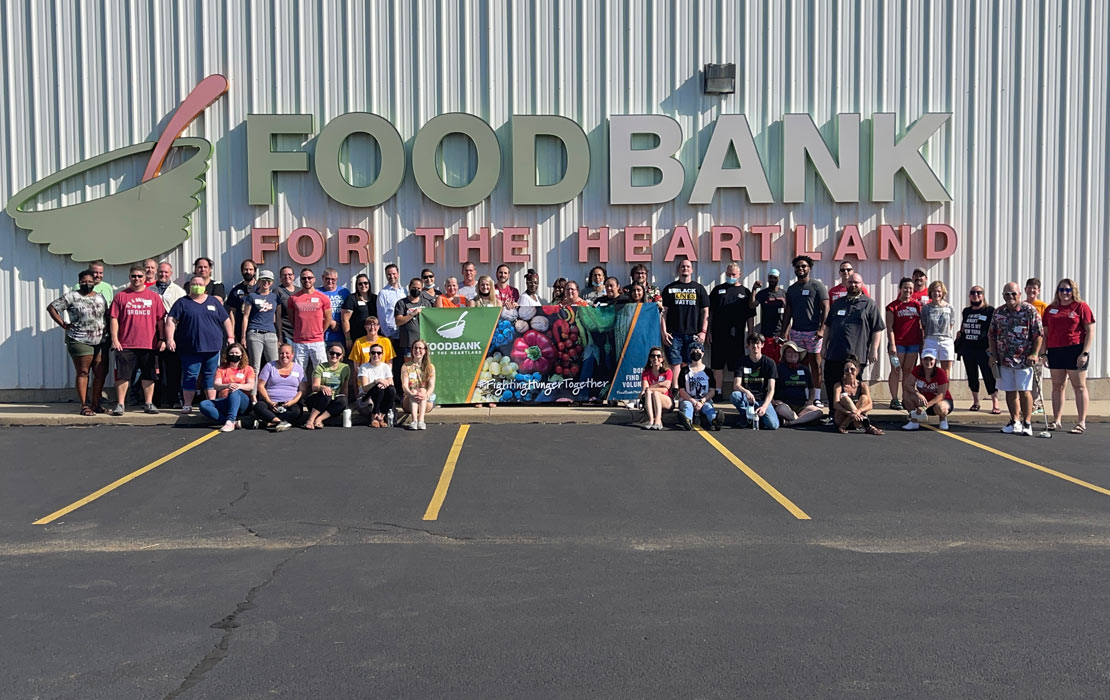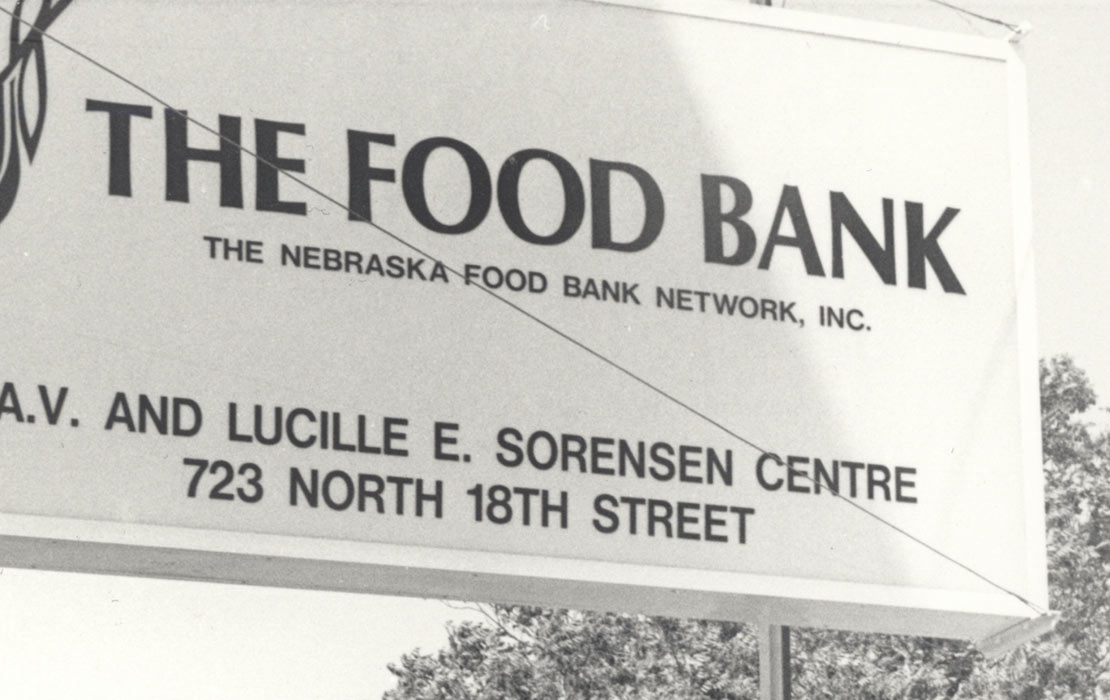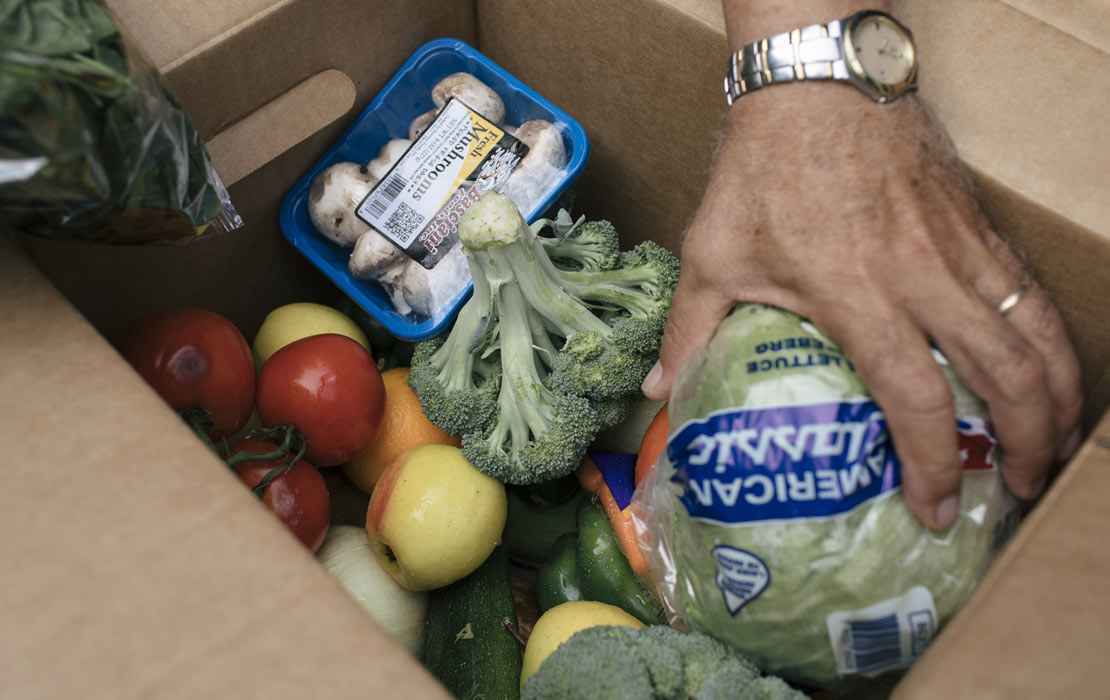Who We Are
Connecting our communities with food, resources, and hope since 1981.
Each day, our neighbors, friends, classmates and co-workers—from families with small children to seniors—struggle to find the nutritious food they need to work, grow, and thrive. Food insecurity is a real problem in our region, and its effects are devastating.
Founded in 1981 and headquartered in Omaha, Nebraska, Food Bank for the Heartland is a 501(c)(3) nonprofit organization with a vital focus: to provide food to children, families, seniors, and veterans facing hunger in Nebraska and western Iowa, to ultimately eliminate hunger in our communities, and to serve our neighbors with respect, integrity and urgency. The Food Bank serves 93 counties—77 in Nebraska and 16 in western Iowa.
We have a big job on our hands, which is why we see the fight against hunger as an ongoing, collaborative effort. We work with individuals, organizations, food manufacturers and distributors, grocery stores, the USDA and Feeding America to procure food, and we purchase food to supplement donations.
Our volunteers help keep our 76,000 square-foot warehouse running quickly and efficiently, and our donors are essential to the success of our programs and mission. 96 cents of every dollar we receive, goes back into our community.
Through the collective power of our leadership, staff, partners, volunteers, and donors, we are able to reach more communities, serve more people, and address food insecurity in a more direct and effective way. As new needs arise, we are ready.
Our Philosophy
Every service we provide, program we offer, and decision we make is rooted in our core Mission, Vision and Values.
Mission
To eliminate hunger in the Heartland by ensuring consistent access to healthy foods through community partnerships.
Vision
To eliminate hunger in our communities.
Values
In everything we do, we serve with respect, integrity and urgency.
Coming to the Table: Food Bank for the Heartland's 2025 video
Clean Room Program
In 2021, Food Bank for the Heartland converted a 600 square-foot section of its Volunteer Center into a regional USDA-certified “clean room” — becoming one of six food banks in the country to offer this state-of the-art-facility. Named for its stringent adherence to food-processing safety standards, this new space allows the Food Bank to properly handle bulk quantities of food — specifically animal-based protein.
The clean room was built through the support of a grant from Cargill and Feeding America, who, along with other suppliers such as Conagra Brands and Smithfield, donate high-protein items like chicken, turkey, beef, sausage, and eggs. Clean room staff then sort and portion these items into smaller packages which are distributed to families in need through the Food Bank’s Network Partners.
Our Programs
Food Bank for the Heartland works with Network Partners, including pantries, schools, churches, emergency shelters, and other non-profit organizations to supply emergency and supplemental food.

News & Community Voices
Discover the latest news about the Food Bank, hear from those throughout the communities we serve, our partners, and more.

Careers
Join the Food Bank team and help eliminate hunger in our service area—one initiative, program, and thoughtful decision at a time.

Our Story
For 40 years and counting, Food Bank for the Heartland has played a pivotal role in uniting communities across Nebraska and western Iowa in the fight against food insecurity.

Reports & Resources
Frequently Asked Questions
A food bank is a non-profit organization that collects and redistributes food to hunger-relief charities. Food Bank for the Heartland works with individuals, organizations, food manufacturers and distributors, grocery stores, the USDA and Feeding America to procure food. We also purchase food to supplement donations. The food is warehoused in our distribution center, and with help from volunteers, it is sorted, packed, and re-distributed across Nebraska and western Iowa.
The Food Bank distributes food to 514 network partners in Nebraska and western Iowa, including pantries, schools, churches, emergency shelters, and other non-profit organizations. The food is then distributed to children, families, seniors, and veterans in need in communities across the Heartland.
Items in the highest demand include those the Food Bank often buys. The list includes macaroni and cheese, peanut butter, rice, pancake mix, canned chicken, boxed potatoes, canned fruit and canned green beans. Learn more.
In FY 2024, 50% of the food received by the Food Bank came from individuals and corporate donors such as manufacturers, grocers, and retail stores; 26% was purchased by the Food Bank and 24% came from USDA commodities.
In FY 2024, 37.7% of the Food Bank’s financial donations came from individual/household donors; 23.8% was provided by corporate donors; 19.7% came from foundations. The remaining 18.8% consists of gifts from special events, civic groups, churches, schools, unions, and the Food Bank’s Foodies group. The Food Bank also receives government support. Learn more by clicking here.
No. The IRS prohibits food banks from selling food.
